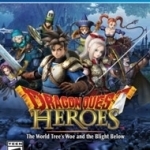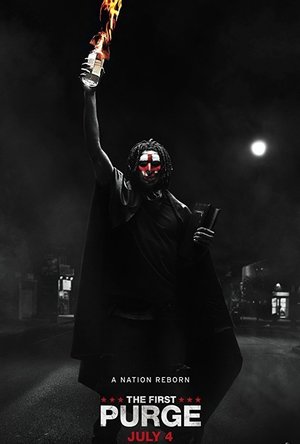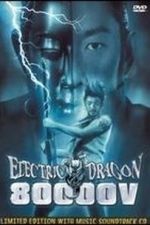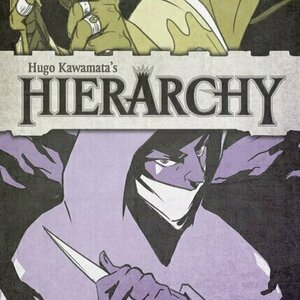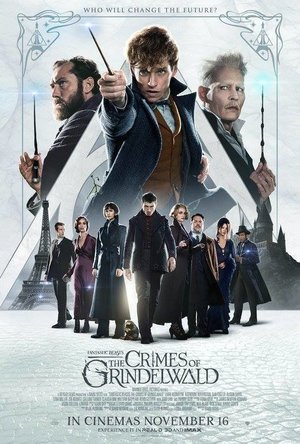
Wind Meter
Weather and Sports
App
The Original Wind Meter ******* Wind Meter 5.0 - Supports iPhone 4 and 5, iOS 6, iOS 7, iOS8. ...

Green Screen Movie FX Studio
Entertainment and Photo & Video
App
Green Screen Movie FX Studio is an incredibly powerful special effects editor that allows you to...

ilocateMobile - Track a phone
Social Networking and Utilities
App
Question: Why you need to download Track My Phone app ? Answer: You need this app to locate a...

Stratego® Single Player
Games and Entertainment
App
Play the best Strategy game ever! Stratego® Official Single Player from Jumbo is all about good...
Mothergamer (1610 KP) rated Dragon Quest Heroes: The World Tree's Woe and the Blight Below in Video Games
Apr 3, 2019
First fight with a dragon!
The tutorial for the controls is easy to follow and the game play controls handle really well. The battle system for the most part is pretty decently thought out and you can play a quick mission here and there. You can switch back and forth between your party members with a quick press of a button which is handy. The story isn't as good as previous Dragon Quest games with a pretty thin plot and a rather sub-par ending. The thing that really shines is the various special battle moves characters can do and the tension gauge. As your heroes land hits on monsters, the tension meter builds up and once it's full you can unleash a chain of powerful attacks that will defeat your enemies.
Tension attacks really pack a punch.
There are side quests you can do while doing the main story; mainly fetch quests or defeat a certain number of monsters. That can get tedious after a while because you revisit some of the same dungeon areas. There's a lack of exploration as you basically just go from one dungeon crawl area to another. Sure the airship town is cool, but I would have liked an opportunity to at least get to check out areas freely rather than have a go from point A to point B situation. Level grinding is pretty easy especially with the live weekend events they have where you can get extra EXP for your heroes (20% this weekend), rare items, and bonus gold. With all the battles your heroes do you can earn more than enough gold to buy weapons and gear for your party which is pretty great. The addition of monster medals is also a plus. Monster medals drop off any monsters you defeat and you can use the medals to summon those monsters to fight alongside you.
A town with everything you need all on one ship!
While I did like Dragon Quest Heroes, I did not love it the way I have the previous games. It is good, but it's not perfect. I understand they went in a different direction and for the most part it works and is fun up to a point. In many of the missions there's usually an object that must be protected from the onslaught of monsters and strategy is crucial here as well as deciding your party setup and which monsters to summon. However, sometimes the strategy isn't enough because there can be hordes of monsters that can overwhelm your party and as you're struggling to zip to and from different areas, it can be frustrating as you try to read a very cluttered map. Sometimes you will fail a mission and have to try again from the beginning. The one good thing about that is all your EXP and items you've gained carry over. It can get repetitive and I did find myself a little bored as I progressed. I tried different tactics if I had trouble with a mission and trying different things does help to an extent. The AI can also be incredibly stupid. There were a few times where I had a party member just standing there doing nothing while they would be attacked by enemies.
Early dungeons start out okay and then it gets complicated.
The game play overall is good, but it's not great. Dragon Quest Heroes is fun to play once and not at full price especially with only 30 hours of play time. I'd suggest waiting until it goes on sale or buying it used. It pains me to say that because I love the Dragon Quest series, but this game could have been better and it just felt so much like a Dynasty Warriors/Hyrule Warriors clone in places which left me a little disappointed.
Movie Metropolis (309 KP) rated The First Purge (2018) in Movies
Jun 10, 2019
After three films of decent quality in which the second, Purge: Anarchy is the highlight, The First Purge promises to shake up the formula by introducing a prequel into the horror franchise. But does it do enough to stop the series from feeling stale or are we looking at yet another paint-by-numbers horror flick?
No. That’s the short answer anyway. Director Gerard McMurray falls into all the usual horror movie clichés with a film that is definitely Purge-like in its construction, but once again plays it all frustratingly safe.
To push the crime rate below one percent for the rest of the year, the New Founding Fathers of America test a sociological theory that vents aggression for one night in one isolated New York community. But when the violence of oppressors meets the rage of the others, the contagion will explode from the trial-city borders and spread across the nation.
The cast of characters in this instalment is possibly the most unlikeable of the bunch, apart from a few exceptions. Marisa Tomei is hideously underused as the experiment’s creator, Dr. May Updale, when in fact she should and could be the most interesting part of the movie. The rest of the cast are one-dimensional characters that you could cut and paste into any horror film of the last decade. Y’Ian Noel as Dmitri is probably the only one who leaves any lasting impression.
Subtlety has never been the series’ strong point. One of the leaders of the New Founding Fathers is called Donald T for heaven’s sake, but that was always part of its dark charm. It has never been afraid to show us an America that, for now at least, doesn’t feel that too far into the future but the political side-swiping in this instalment bashes us over the head with what feels like a brick. It’s so on the nose.
The premise has always been the best part, and the Achilles heel, of the series and so it continues with The First Purge. Fans waiting to get a really intricate look at how the night of crime came to be will be disappointed as we’re treated to barely 10 minutes of exposition before we’re slung head-first into the same killing-fest that the last three films descended into after their first acts.
This gets old quickly, even more so in this instalment as the repetitive jump scares come thick and fast with uninspiring camerawork, dreadful dialogue and lethargic kills. The use of contact lenses to create some striking neon visuals aren’t enough to lift anything in the film above average.
Thankfully, the final act in a dimly lit tower block shows the audience the type of film it could have been. Slickly shot and nicely styled, it’s a much-improved finale that is only let down by some truly dreadful CGI blood splatter. However, the use of strobe lighting is an inspired choice in this sequence as we follow two groups of people each trying to dispatch the other.
Unfortunately, this highlight isn’t enough to lift the rest of The First Purge above the mundane. Where the first in the series was a film testing the waters regarding its premise and the second improved on that ten-fold taking the action out onto the streets, this tries to use a hybrid of both but it comes across as stale as a ten day old loaf.
The pacing too is an issue. The first 20 minutes or so are excruciatingly slow as the film tries to set-up as many of its plot-points as possible. Now, 20 minutes might not sound too bad, but this is a 97 minute film – that’s a fifth of the time gone with nothing achieved.
If we must get a fifth film, and from the box-office figures, it bafflingly looks like we will, all we can do is hope they take the cheap jump scares and replace them with a thrilling look at the people who brought the purge to life in the first place. Until then, save your money and wait for the network premiere when it comes to television in a couple of years.
When the best part of your film is the purge announcement that has featured in every instalment, you know you’ve run into some trouble.
https://moviemetropolis.net/2018/07/12/the-first-purge-review-yet-another-wasted-opportunity/
Chris Sawin (602 KP) rated Electric Dragon 80.000 V (2000) in Movies
Jun 18, 2019
Electric Dragon 80,000 V is a beyond weird cinematic experience. It clocks in at a little under 55-minutes, so calling it a full-length movie may be a bit of an overstatement. Written and directed by Gakuryū Ishii (credited as Sogo Ishi, he has also directed Labyrinth of Dreams and Angel Dust), the Japanese film is visually similar to Tetsuo, the Iron Man but is more like an extended music video that collided with the visuals of a live-action anime or manga. Ishii used the leftover funds from Gojoe: Spirit War Chronicle to make Electric Dragon 80,000 V while recruiting Asano and Nagase who were the two main leads in Gojoe.
Having nothing else in common with Gojoe, Electric Dragon 80,000 V is absolutely its own beast. The film’s biggest strength is its cinematography. With Norimichi Kasamatsu (Korean filmmaker Lee Song-il’s 2013 remake of Unforgiven) as the film’s cinematographer, being entirely in black and white allows the visuals of the film to bleed off the screen. Some of the most unique shots are when Dragon Eye is playing guitar as the drastic lighting and creative perspective are just what you’d expect from someone taking all of their frustrations out on a guitar; incredibly angry and in your face. There’s a scene in the second half of the film where Thunderbolt Buddha has gotten Dragon Eye’s full attention and Dragon Eye is moving through rooms without moving himself. He appears to be floating from room to room and it allows you to realize how he’s feeling at that particular point in the film as if it’s all a bad dream.
The music may be what makes or breaks the film for the viewer as it tends to walk a thin line between catchy rock music to nothing but loud, distorted noise with screaming. The film is noisy in every sense of the word. Whenever Dragon Eye starts playing his guitar, it often just sounds like noise. It fits the tone of the film perfectly since it complements the concept of channeling 80,000 volts of electricity through a guitar. That would probably sound more like amplified noise than polished music. If you’re not a fan of loud, heavy music then it may affect your judgment of the film.
Electric Dragon 80,000 V is an unusual gray scale experiment, but it’s certainly innovative and unlike anything else you’ve ever seen. It’s not a remake and it’s not an adaptation. It’s an original film that stands on its own, but its radical plunge into such severe weirdness could be a turnoff for some viewers as its manga inspired influences flow excessively through every frame surrounding every sequence with boisterous and heavy guitar riffs; think like a shorter and black and white version of Scott Pilgrim vs. the World that somehow fused with the FLCL anime. This was discovered while digging through Tadanobu Asano’s filmography and if you’re fan of his stuff, then Electric Dragon 80,000 V comes highly recommended.
Electric Dragon 80,000 V isn’t available to stream anywhere, was never released on Blu-ray (this would be amazing in high definition), and the DVD is out of print. A high quality version of the DVD cover had to be pulled from eBay of all places since Google can’t seem to find one otherwise that isn’t tiny in size. The DVD is available on Amazon from third party sellers for $39.99 plus $3.99 shipping in new condition and $29.98 with free shipping in used condition. A pre-owned DVD is running $69.99 to $79.99 on eBay with free shipping. It does look like someone uploaded a 90-minute version of the film on YouTube with English subs and that looks to be the best way to see the film at the moment.
Bob Mann (459 KP) rated The Children Act (2018) in Movies
Sep 28, 2021
Judge Maye (Thompson) is a childless wife to her loving husband Jack (Tucci), but is also a workaholic. This is driving the long-term couple to the point of infidelity: a fact the ever-focused Fiona – whose life, to her, probably feels to be in a perfect if selfish equilibrium – is oblivious to. With Fiona’s intense but comfortable world about to cave in around her, her increasing stress is not helped by the latest case she is working on: one where Adam ( Fionn Whitehead from “Dunkirk“), a Jehovah’s Witness boy and a minor, is refusing on religious grounds the blood transfusion he desperately needs to fight his leukaemia. Fiona’s decisions in the months ahead go much further than a simple judgement on the case.
Two acting giants – one born in London; one born in New York – tower over this Ian McEwan adaptation like leviathons. I bandy around the phrase “national treasure” a lot in these reviews but, if there was a league table of national treasures, Emma Thompson would qualify for the Champion’s League every season. Here she is simply breathtakingly powerful in the lead role of Judge Fiona Maye, exhibiting such extremes of emotion that you would like to think that an Oscar nomination would be assured. (However, before I run out and put a £10 bet on her to win, the film is such a small British film that unfortunately both a nomination and a win seem unlikely! THIS IS A CRIME! So I have added the tag #OscarBuzz to this post…. please share and lobby people, lobby! Perhaps at the very least we can hope for some BAFTA recognition).
Sometimes a masterly lead performance can make a co-star performance seem unbalanced, but no such danger here. Stanley Tucci makes a perfect acting foil for Thompson: if he were a wine he would be described as “exasperation, frustration, compassion with strong notes of respect”. And he carries it off with perfection.
This is an incredibly intelligent film, working on so many different levels and subject to so much interpretation. Fiona’s feelings for the troubled teenager feel more maternal than sexual, but when those feelings become returned and escalate the whole piece develops a queasily oedipal quality. Many films have focused on illicit attractions between teacher and pupil, but here lies a new variation, with Maye fighting against her best professional insticts to ‘do the right thing’. “I’m frightened of myself” she eventually wails to a colleague.
In his opening hospital scenes*, Adam seems completely other-wordly compared to a typical teen and this comes across as utterly false. That is, until you consider the oddness of his family background and Jehovah’s Witness upbringing. As such, the film just about gets away with it. Whitehead does a good job with a difficult role. (*It took my wife to point out – after the film, thank goodness – the similarities between this hospital scene and a famous guitar-playing scene in “Airplane” at which I dissolved into guffaws!).
If you’ve been in a court, you’ll know that there is something regal and magical about a judge in full regalia entering a packed courtroom. So it’s unusual to see the view from the other side of the door… a non-descript office corridor and a non-descript door. Helping the judge on this side of the door is her PA Nigel, played by the brilliant Jason Watkins: a TV regular (e.g. “Line of Duty”, “W1A”) but seen far less at the movies.
As a story of obsessive fixation, it borders on McEwan’s disturbing earlier work “Enduring Love”. And it has the potential to go in lots of interesting directions as a sort of bonkers platonic love triangle (“He wants to live with US?” splutters Tucci). Where the story does end up going was not particularly to my liking, and a melodramatic concert scene was – for me – a little overdone. However it does give rise to a scene (the ‘sopping wet’ scene) that shows Thompson at her most brilliant: if she DID get Oscar or BAFTA nominated then this will be her pre-announcement snippet.
It’s a great film for showcasing acting talent, but beware: it’s not got a “lot of laffs”. As such it’s very much a “Father Ted film” that takes a while to recover from.
Purple Phoenix Games (2266 KP) rated Hierarchy in Tabletop Games
Oct 1, 2019
Hierarchy is an abstract strategy game of perfect information for 2 players. Comprised of a mere 14 playing cards (excluding title and reference cards) it is quite the compact game – as is to be expected from the Button Shy crew. In a game of Hierarchy, players take turns playing cards from their open hand (no hidden information here!) on top of the last card played by their opponent, per the placement restrictions. To win, you must be able to play a card on top of which your opponent is unable to play a card – effectively ‘checkmating’ them and claiming victory for yourself!
DISCLAIMER: We were provided a prototype copy of this game for the purposes of this review. As this is a preview copy of the game, I do not know if the final rules or components will be similar or different to what we were provided. -T
Here’s how it works in detail. Each player first receives a Quick Reference Card, and is then dealt half of the deck (7 cards). The cards are double-sided to represent the two player colors – purple and gold – so each player flips their 7 cards to show their chosen color. Since this is a game of perfect information, all cards are laid out on the table, so each player always knows what cards their opponent has available to them. The player who was dealt the ‘Imposter’ card goes first. Each card has a specific number, ranging from 1 to 13, as well as a specific ability. To play a card, its number must be higher than that of the card below it, unless the card’s specific ability says it can be played otherwise. For example, if I play the Queen (#12), Travis could play the King (#13, numerically higher) or the Assassin (#1) since its power allows it to be played atop any card except for the Tower and Leper. Don’t be worried about having to memorize all the card abilities – they are all detailed on the Quick Reference Cards (see photo below). Play continues back and forth until one player is unable to play a card, either because they have no cards left at all or because they have no valid cards left to play. That player loses the game, and the remaining player is the top of the Hierarchy! (Roll credits)
Let’s talk components first. They’re excellent, which is no surprise coming from ButtonShy. Of course, we just have a preview copy of the game, so I can only imagine that the card quality might be up for improvement during the Kickstarter. That being said, the cards we received are nice and sturdy, as is the tell-tale wallet of a ButtonShy game. The text on the cards is a good size, and the font is easy to read. The artwork is fine, but quite honestly not something I looked at in depth until Travis mentioned the style. I think that’s because the cards are all monochrome, the art just didn’t really draw my eye. Not a knock on the game, just something I noticed! Speaking of color, I personally love the player color choices of Purple and Gold – the school colors of my Alma Mater ((the University of Northern Iowa, go Panthers!)(also of the Alma Mater of the rest of us – Western Illinois University – GO NECKS! -T)). Maybe I’m biased, but I think those two colors are a great combination 🙂
And how about the gameplay? I think it’s excellent. For such a compact and ‘light’ game, the strategy required for success keeps the game extremely engaging. You always know the cards your opponent has, and you’ve got to be thinking at least several turns in advance to try to back them into a corner while not letting yourself fall victim to an unnoticed strategic play. Another neat thing about Hierarchy is how quickly it plays – typically in 20 minutes or less. You might have to devote a decent amount of brainpower to outwitting your opponent, but you definitely don’t need to devote hours of time during your game night for this game, and I love that. Gamers who enjoy games like Citadels or Love Letter might enjoy the familiarity of Hierarchy’s gameplay coupled with the intimacy of a strictly 2-player game. The final verdict from me is that Button Shy has another hit on their hands with Hierarchy. I am very much looking forward to following the campaign, and definitely plan to pull this game out many times in my future!
Bob Mann (459 KP) rated Fantastic Beasts: Crimes of Grindelwald (2018) in Movies
Sep 28, 2021
The Plot
I’d really love to tell you about the plot. I really would! But I would struggle to pull all the multitude of strands together from J.K. Rowling’s story and coherently explain them to anyone. If Rowling had put ten thousand monkeys (not a million – it’s no bloody Shakespeare) into a room with typewriters and locked the door I wouldn’t be surprised.
Let me try at a high level….. The arch-criminal wizard Grindelwald (Johnny Depp) is being tortured in ‘Trump Tower’, but manages to escape and flees to Paris in pursuit of a mysterious circus performer called Credence (Ezra Miller) and his bewitched companion Nagini (nudge, nudge, wink, wink) played fetchingly by Claudia Kim. Someone needs to stop him, and all eyes are on Albus Dumbledore (Jude Law). But he is unable to do so, since he and Grindelwald are “closer than brothers” (nudge, nudge, wink, wink). So a reluctant and UK-grounded Newt Scamander (Eddie Redmayne) is smuggled into the danger zone… which suits him just fine since his love Tina (Katherine Waterston) is working for the ministry there, and the couple are currently estranged due to a (topical) bout of ‘Fake News’.
Throw in a potential love triangle between Newt, his brother Theseus (Callum Turner) and old Hogwart’s schoolmate Leta Lestrange (Zoë Kravitz) and about a half dozen other sub-plots and you have… well… a complete bugger’s muggle – – sorry – – muddle.
A plot that’s all at sea
Above all, I really can’t explain the crux of the plot. A venerable diarrhoea of exposition in a crypt, during an inexplicably quiet fifteen minutes (given ‘im-who-can-be-named is next door with about a thousand other people!) left me completely bewildered. A bizarre event at sea (no spoilers) would seem to make absolutely NO SENSE when considered with another reveal at the end of the film. I thought I must have clearly missed something… or I’d just not been intelligent enough to process the information…. or…. it was actually completely bonkers! Actually, I think it’s the latter: in desperation I went on a fan site that tried to explain the plot. While it was explained there, the explanation aligned with what I thought had happened: but it made no mention of the ridiculousness of the random coincidence involved!
The turns
The film’s a mess. Which is a shame since everyone involved tries really hard. Depp oozes evil very effectively (he proves that nicely on arriving in Paris, and doubles-down about 5 minutes later: #veryverydark). Redmayne replays his Newt-act effectively but once again (and I see I made the same comments in my “Fantastic Beasts” review) his character mumbles again so much that many of his lines are unintelligible.
I also complained last time that the excellent actress Katherine Waterston was criminally underused as the tentative love interest Tina. this trend unfortunately continues unabated in this film…. you’ll struggle afterwards to write down what she actually did in this film.
Jacob (Dan Fogler) and Queenie (Alison Sudol, looking for all the world in some scenes like Rachel Weisz) reprise their roles in a sub-plot that goes nowhere in particular.
Of the newcomers, Jude Law as Dumbledore is a class-act but has very little screen time: hopefully he will get more to do next time around. Zoë Kravitz impresses as Leta.
Wizards of the screen
As you would expect from a David Yates / David Heyman Potter collaboration, the product design, costume design and special effects are all excellent. Some scenes are truly impressive – an ‘explosion’ in a Parisian garret is particularly spectacular.
But special effects alone do not a great film make. Many reviews I’ve seen complain that this was a ‘filler’ film… a set-up film for the rest of the series. And I can understand that view. If you analyse the film overall, virtually NOTHING of importance actually happens: it’s like the “Order of the Phoenix” of the prequels.
Final Thoughts
I dragged myself along to see this one because “I thought I should”. The third in the series will really need to sparkle to make me want to see it. If J.K. Rowling were to take me advice (she won’t – she NEVER returns my calls!) then she would sculpt the story-arc but leave the screenwriting to someone better. The blame for this one, I’m afraid, lies at Rowling’s door alone.
